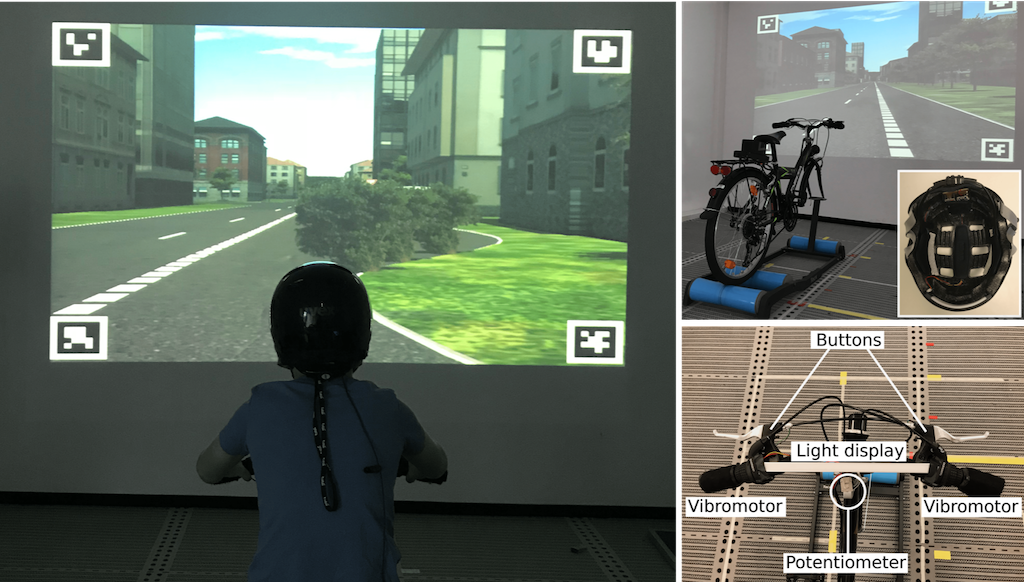
Child cyclists aged between six and thirteen years are often at greater risk for traffic accidents. This is in part due to the cognitive and developmental differences that affect the performance of cycling activities. Using visual, vibrotactile, and auditory feedback situated in the helmet and bike, we explored how alerts and warning signals could be conveyed to children in an understandable and intuitive way. We developed an indoor bicycle simulator to test our system in a safe and controlled environment.
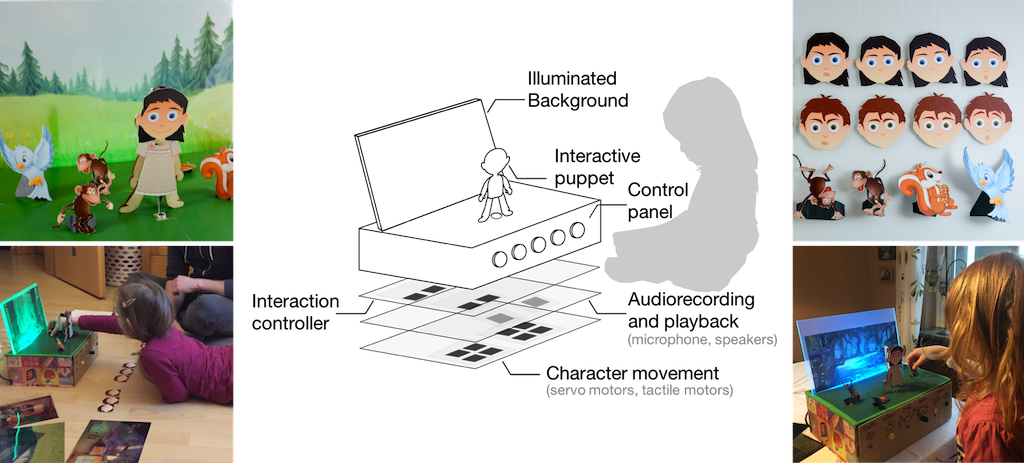
Storytelling is one approach to help children develop emotional literacy and deal with their own feelings constructively. To facilitate and complement this process, we developed an interactive storytelling prototype to help children and parents explore emotional situations. The child can create different scenes and scenarios by changing the background, the ambient color (perhaps to reflect mood), and complementary characters and objects. Moreover, the main character can be electronically moved, and verbal expressions can be recorded and replayed.
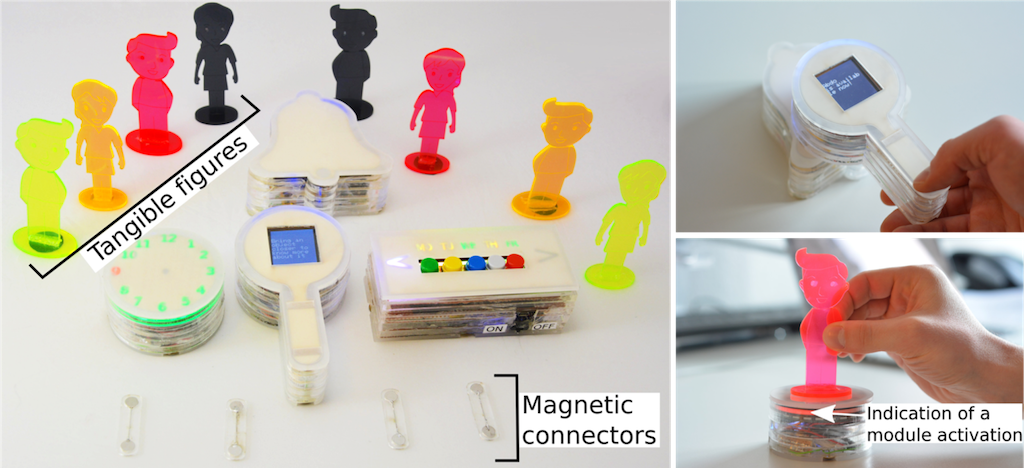 This project explores an alternative tangible way of interacting with existing calendaring systems. It is really aimed at supplementing rather than replacing digital calenders and focuses on being fun and playful. This networked toolkit provides availability information (day and week) for a group of colleagues via different feedback modalities, such as light and sound, without need for a smart phone or desktop application. The modules in the kit, can be rotated, touched, and connected (via magnetic connectors) to provide working colleagues with calendaring functions such as checking availability of team members, setting reminders, or getting aggregated data.
This project explores an alternative tangible way of interacting with existing calendaring systems. It is really aimed at supplementing rather than replacing digital calenders and focuses on being fun and playful. This networked toolkit provides availability information (day and week) for a group of colleagues via different feedback modalities, such as light and sound, without need for a smart phone or desktop application. The modules in the kit, can be rotated, touched, and connected (via magnetic connectors) to provide working colleagues with calendaring functions such as checking availability of team members, setting reminders, or getting aggregated data.
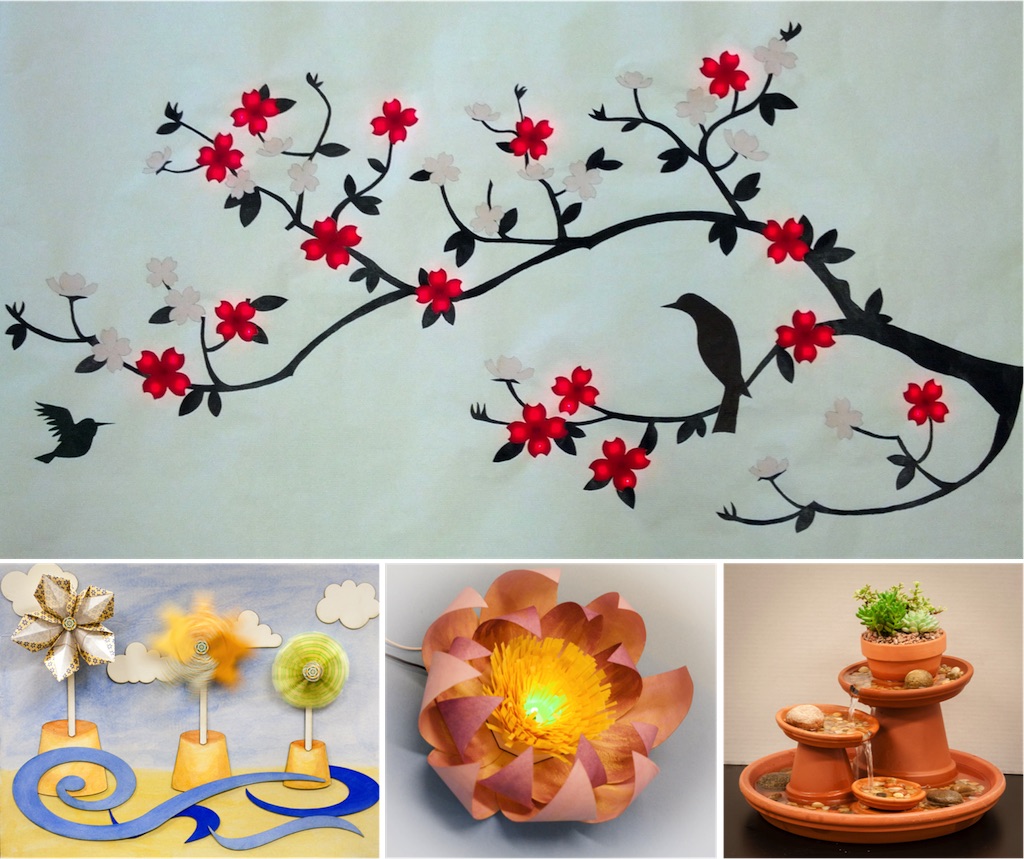
Health Craft is a alternative way of thinking about health technologies for children where kids can craft their own personalized visualizations of health through a set of wearable and ambient building blocks. Specifically, the system is comprised of an electronic wearable device that can (a) track a particular health or wellness metric through interchangeable sensors (e.g., UV sensor, accelerometer, button), and (b) relay that information to a set of ambient computationally enhanced blocks.

These blocks abstract the information and present them to the child using a variety of feedback modalities such as light, sound, or movement. Thus, children can create different health visualizations by combining and crafting these blocks in unique highly personalized ways. For example, a child might create an origami windmill using the ambient motor module to reflect time spent playing outside based on data from the UV sensor. As she spends more time outside, the faster the origami windmill spins.
In this constructionist approach to health technology, the emphasis is on personal expressiveness, construction, and health education through craft. An early video of the types of health visualizations that can be crafted with the system can be seen at: https://vimeo.com/102302357.
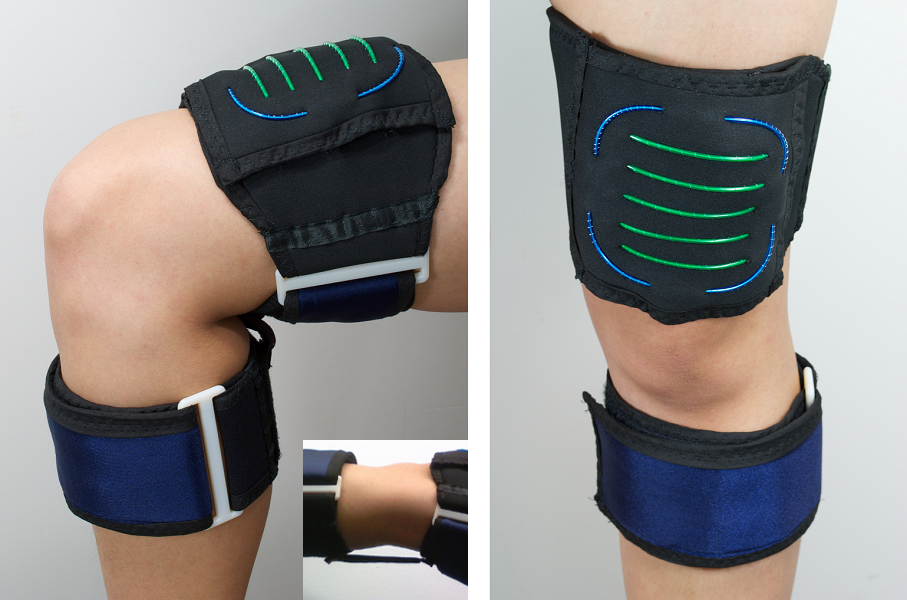
PT Viz is a wearable sensory display for visualizing knee rehabilitation as part of an in-home physical therapy program. Currently, patients undergoing knee rehabilitation have limited ways of assessing exercise form and extent of movement at home. The wearable electronic prototype helps visualize knee bend through a neoprene sensor and an electroluminescent display. The current design is better suited for patients recovering from surgery as opposed to patients with chronic conditions since surgery patients have greater improvements over a smaller period of time. A video of the device can be seen at: https://www.youtube.com/watch?v=7UMdrMptG18

The goal of this project was to design a low cost and accessible technological intervention for improving the health habits of low SES families. We conducted ethnographic research through multimedia elicitation interviews (MEIs) to understand the target population’s health behaviors and identified unhealthy snacking as a major issue. We also held participatory design sessions where participants developed their own low-fidelity prototypes and health information visualizations. Based on these results, we developed four culturally sensitive, age appropriate high fidelity (mobile phone) prototypes for improving snacking habits.